Click on images to enlarge them.
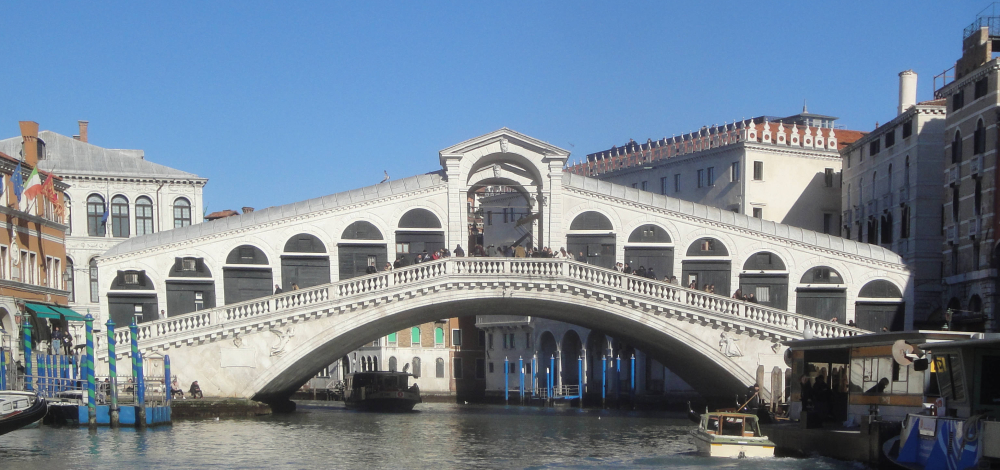
The Rialto Bridge (Ponte di Rialto (1588-92. Antonio Da Ponte, architect. According to Richard Saul Wurman, the Republic decided to replace a “wooden drawbridge (the only one over the Canal Grande) with a stone structure. The arcades on top were necessary in order to stabilize the structure. Heavy buildings were added on both sids of the bridge to keep the foundation in place” (101).
The Rialto Bridge has excited the admiration and imaginations of British artists, writers, and tourists, including Ruskin himself, but as he points out at the beginning of the second volume of The Stones of Venice, “The Venice of modern fiction and drama is a thing of yesterday, a mere efflorescence of decay, a stage dream which the first ray of daylight must dissipate into dust. . . . No great merchant of Venice ever saw that Rialto under which the traveller now passes with breathless interest: the statue which Byron makes Faliero address as of one of his great ancestors was erected to a soldier of fortune a hundred and fifty years after Faliero’s death” (10.8).
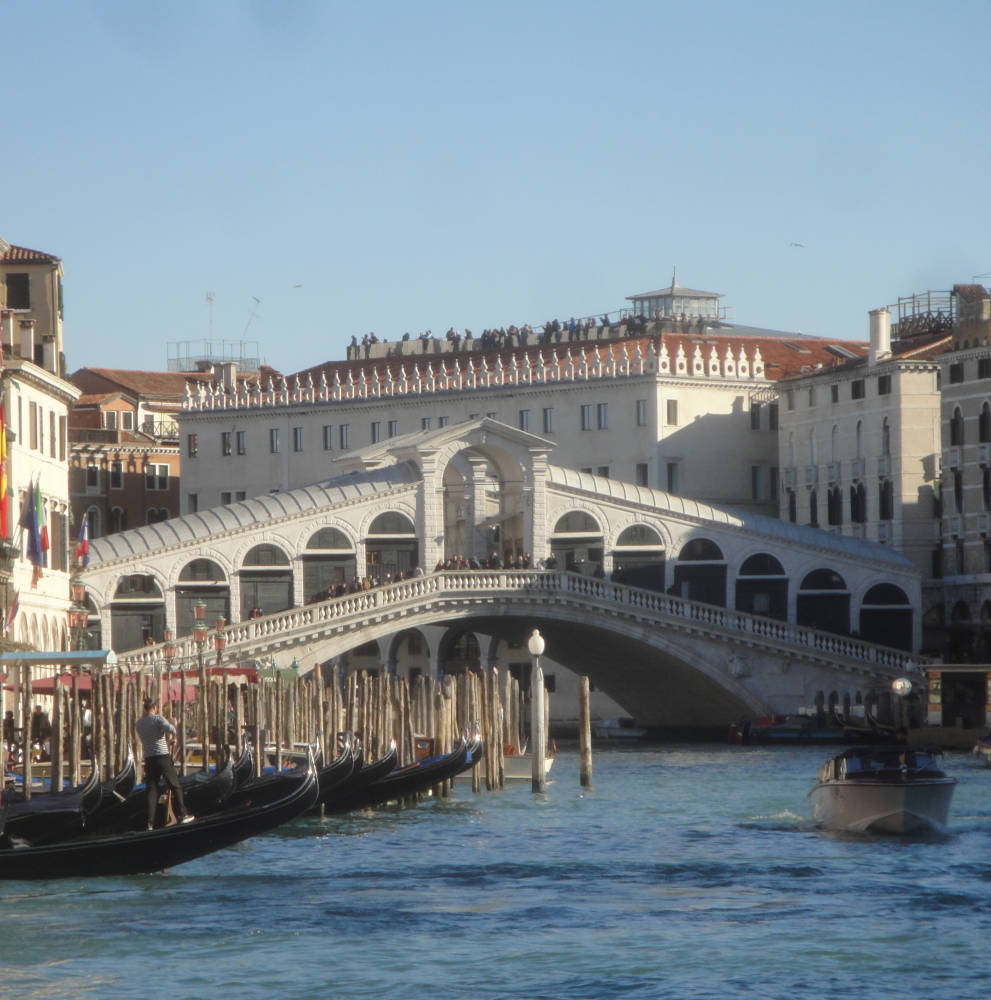
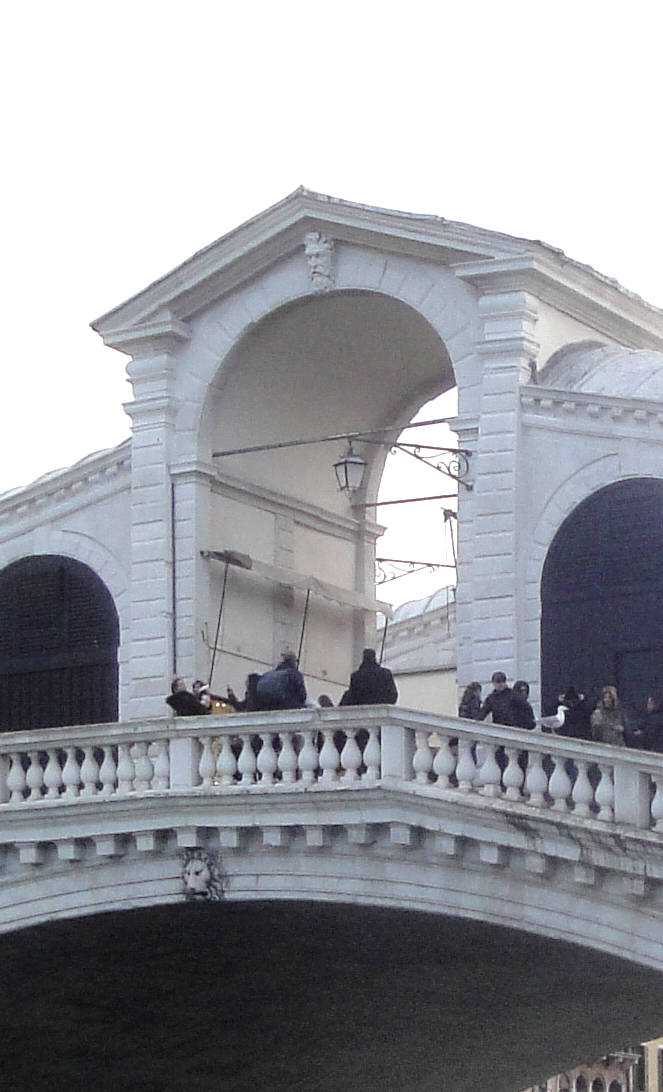
In the third volume of The Stones of Venice Ruskin praises the Rialto as “the best building raised in the time of the Grotesque Renaissance; very noble in its simplicity, in its proportions, and in its masonry. Note especially the grand way in which the oblique archstones rest on the butments of the bridge, safe, palpably both to the sense and eye: note also the sculpture of the Annunciation on the southern side of it; how beautifully arranged, so as to give more lightness and a grace to the arch—the dove, flying towards the Madonna, forming the keystone,—and thus the whole action of the figures being parallel to the curve of the arch, while all the masonry is at right angles to it. Note, finally, one circumstance which gives peculiar firmness to the figure of the angel, and associates itself with the general expression of strength in the whole building; namely that the sole of the advanced foot is set perfectly level, as if placed on the ground, instead of being thrown back behind like a heron’s, as in most modern figures of this kind.”
“The sculptures themselves are not good; but these pieces of feeling in them are very admirable. The two figures on the other side, St. Mark and St. Theodore, are inferior, though all by the same sculptor, Girolamo Campagna.
”“The bridge was built by Antonio da Ponte, in 1588. It was anciently of wood, with a drawbridge in the centre, a representation of which may be seen in one of Carpaccio’s pictures at the Accademia delle Belle Arti: and the traveller should observe that the interesting effect, both of this and the Bridge of Sighs, depends in great part on their both being more than bridges; the one a covered passage, the other a row of shops, sustained on an arch. No such effect can be produced merely by the masonry of the roadway itself” (11.400).

The Rialto on a gloom day. The Palazzo dei Camerlenghi appears at the right.
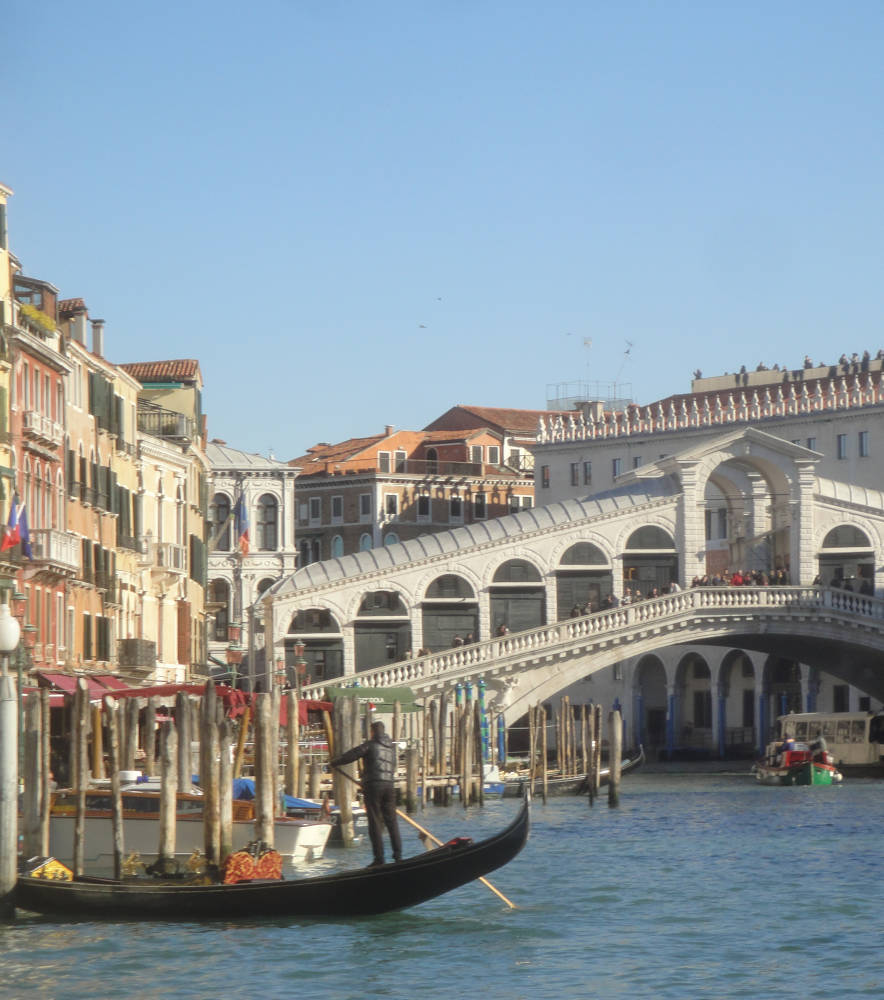
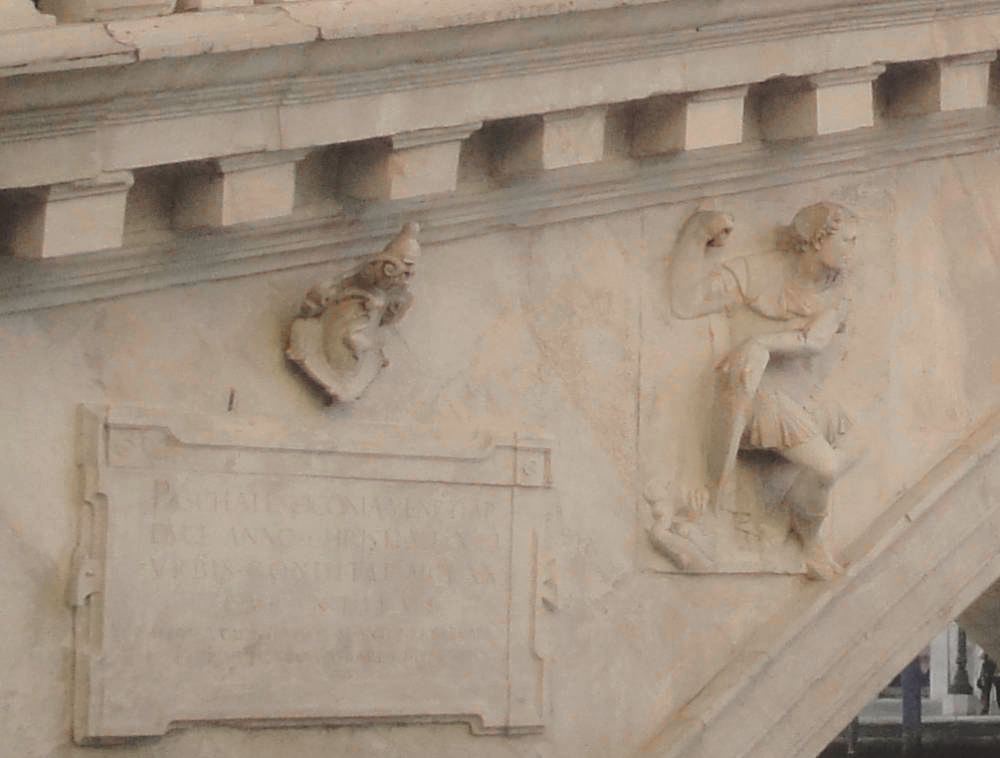
More of Ruskin's Venice
- The Bridges of Venice
- St. Mark’s Cathedral
- The Palazzo Ducale, Venice
- The Scuola de San Rocco
- On the Grand Canal
- Leaving the Grand Canal
- On the way to Venice from the mainland
- Venice: Details and Corners
Photographs 2020. [You may use these images without prior permission for any scholarly or educational purpose as long as you (1) credit the photographer and (2) link your document to this URL in a web document or cite the Victorian Web in a print one.]
Bibliography
Ruskin, John. The Works. Ed. E. T. Cook and Alexander Wedderburn. “The Library Edition.” 39 vols. London: George Allen, 1903-1912.
� �
Last Modified 29 March 2020